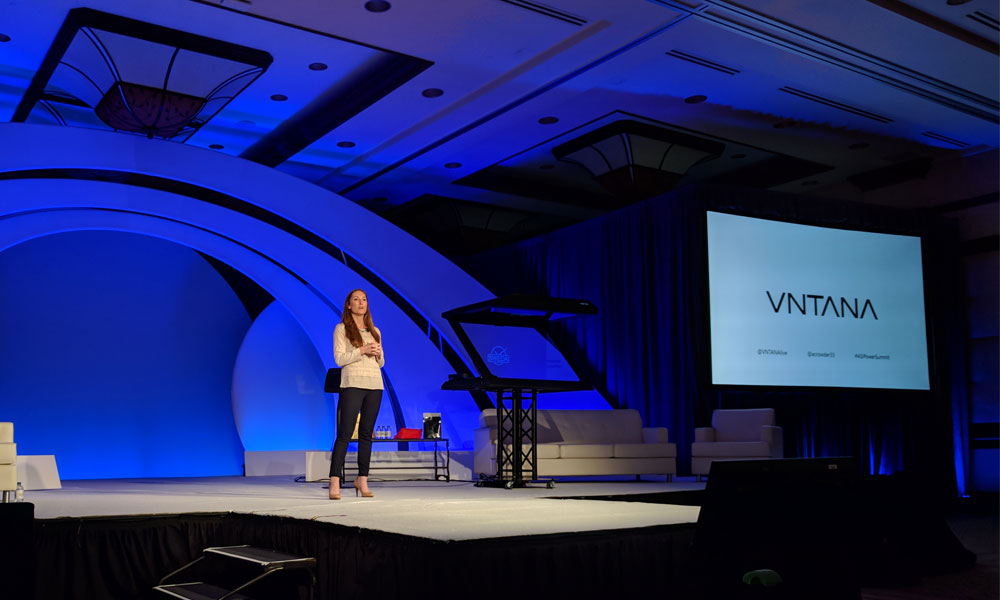News October 24, 2017
Use Augmented Reality to Engage Clients and Generate Leads
Imagine a world where a giant green arrow appears, as if by magic, above your head, so your Uber driver can pick you out of a crowded sidewalk. Or footsteps that materialize, one by one, in front of you, to help you reach your intended destination. That’s the promise behind augmented reality, which attempts to seamlessly infuse the digital into our physical landscape. “Virtual reality and augmented reality are going to change every aspect of our world,” said Ashley Crowder, co-founder and CEO of VNTANA, during a session at the 2017 ASI Power Summit in San Diego.
Crowder explained how augmented reality is evolving from smartphone-based programs, like the much-hyped Pokemon Go fad last year, to headset experiences being explored by companies like Microsoft and Google, to the hologram technology developed by Crowder’s company. VNTANA creates interactive hologram experiences to build engagement and help brands generate leads. “Experiences are the new way to engage consumers,” she said.

VNTANA created the first-ever hologram karaoke experience for singer Rob Thomas. For last year’s Super Bowl, the company worked with Nickelodeon to let fans morph into a live hologram to toss a football to Spongebob Squarepants.
On stage, Crowder demonstrated another business use of augmented reality: to create a virtual shopping experience. Using gesture controls, she was able to scroll through a holographic array of water bottles from Top 40 supplier Sweda Co. LLC (asi/90305). The user experience is only one part of augmented reality’s appeal, Crowder said. Using eye-tracking and other algorithms, VNTANA is able to collect data on the age, gender and even sentiment of people engaging with a hologram. For instance, VNTANA can tell whether users prefer red or blue water bottles, based on factors like how long they spend interacting with each hologram. “It’s all about the data at the end of the day,” Crowder said.
Crowder also had other examples for how augmented reality and promotional products could be tied together. For instance, a distributor could develop a treasure hunt at a trade show, using augmented reality on a mobile device. The prize at the end of the hunt would be the branded product, she said.
The possibilities are nearly endless, according to Crowder, and they’ll continue to grow as augmented reality technology matures.
